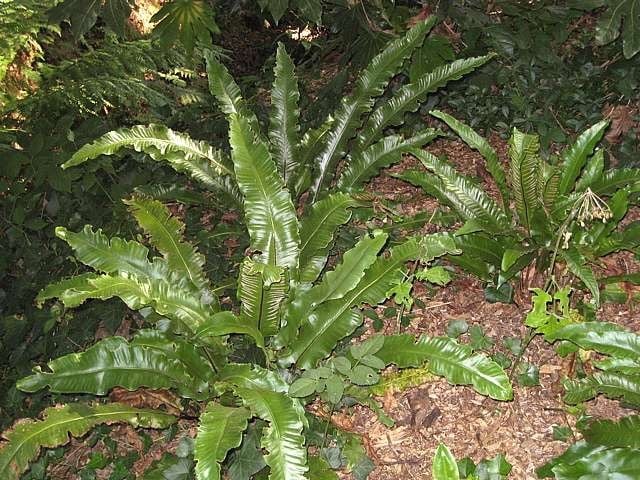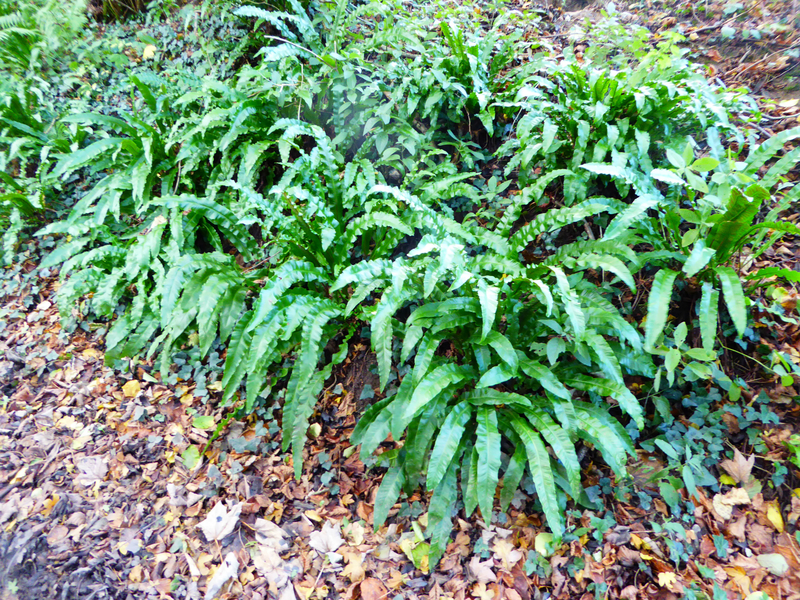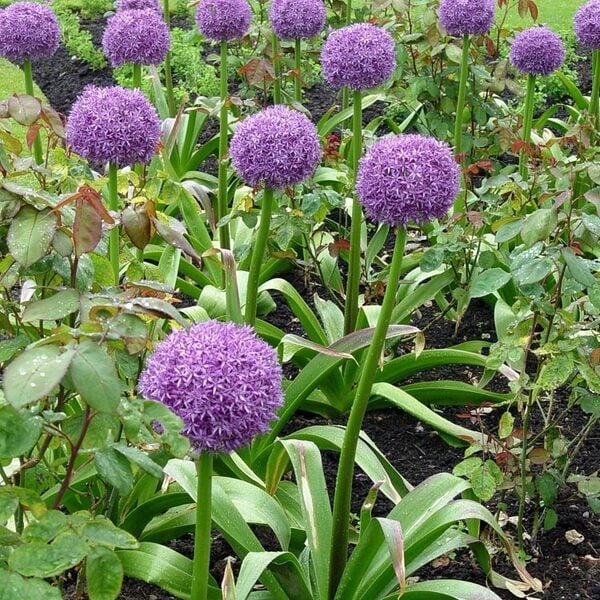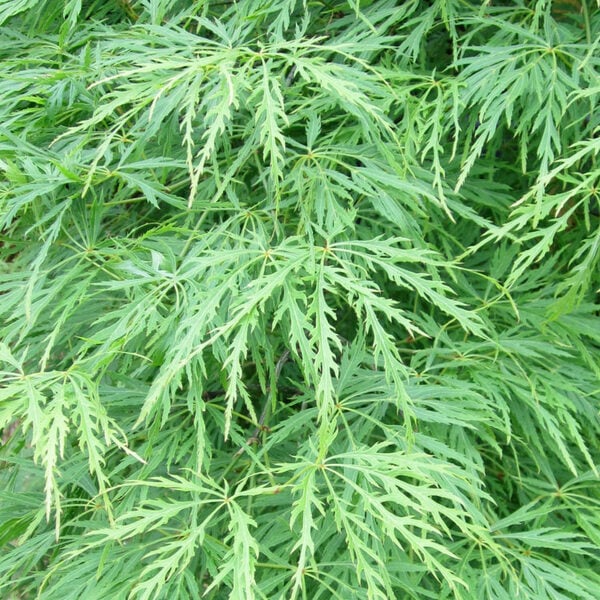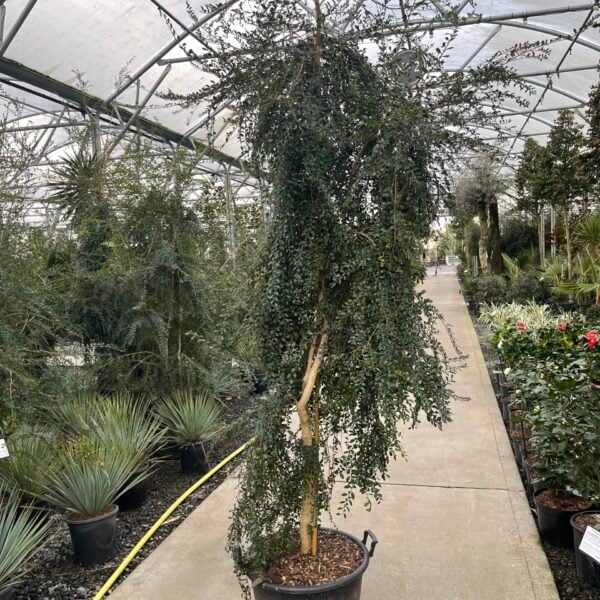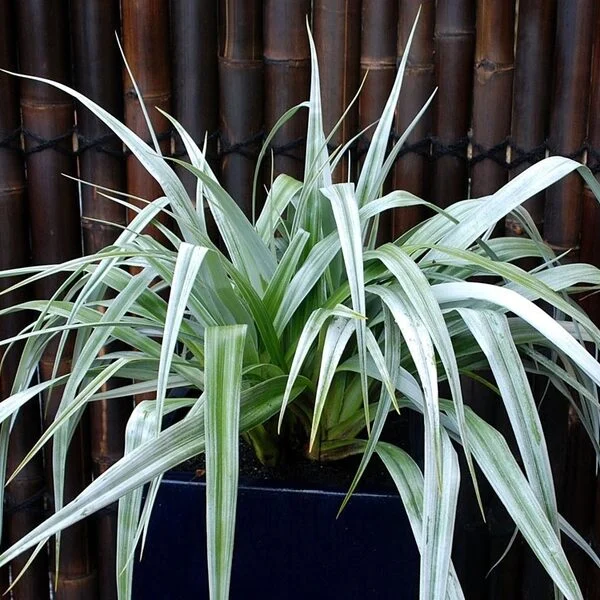Asplenium scolopendrium (Hart's Tongue Fern)
A familiar evergreen British native with bright green entire fronds to 2 ft. OK on acid soil, but loves very alkaline soil (chalk). Please contact us for stock availability and sizes.

Hardiness level Green
One of the few native plants we grow and very beautiful it is too but like all ferns, it needs the right conditions. In West Sussex, it's always the bases of the north side of the Sussex Downs that you'll see them at their very best (Cocking, Edburton, Fulking etc). The ingredients are alkalinity (the chalk of the Downs), deep soil and good drainage (being at the base of the hill where all the organic detritus collects) and shade and shelter (under trees and at the bottom the hills). The result is great vigour sometimes leading to evergreen fronds well over 2 ft in length. The shinyness of the leaves lends them an air of rude health and exoticicity. They'll grow on acid soil too but they do seem to have a liking for alkali conditions - like around collapsed walls and hardcore where the alkalinity of the mortar is high. If you have a garden where ferns already grow happily these should be fine. Gardens I'd avoid are on new building sites where the chances are the garden is on compacted clay with a few inches of top soil that the developers kindly left. Ferns hate those conditions - poor drainage, waterlogged, yuck if you're a fern. After a few years, as the soil improves, try a few ferns and see how they get on. When it comes to soil conditions, ferns are fuss-pots.
Propagated by us from spores.
Additional Information |
|
|---|---|
| Soil Type | |
| Light | |
| Plant Type | |
| Continent of Origin | |
| Specialist Plants | |
| Situation | Coastal, Conservatories, Mild City Gardens, Plants for Pots, Sheltered Garden |
| Hardiness | |




